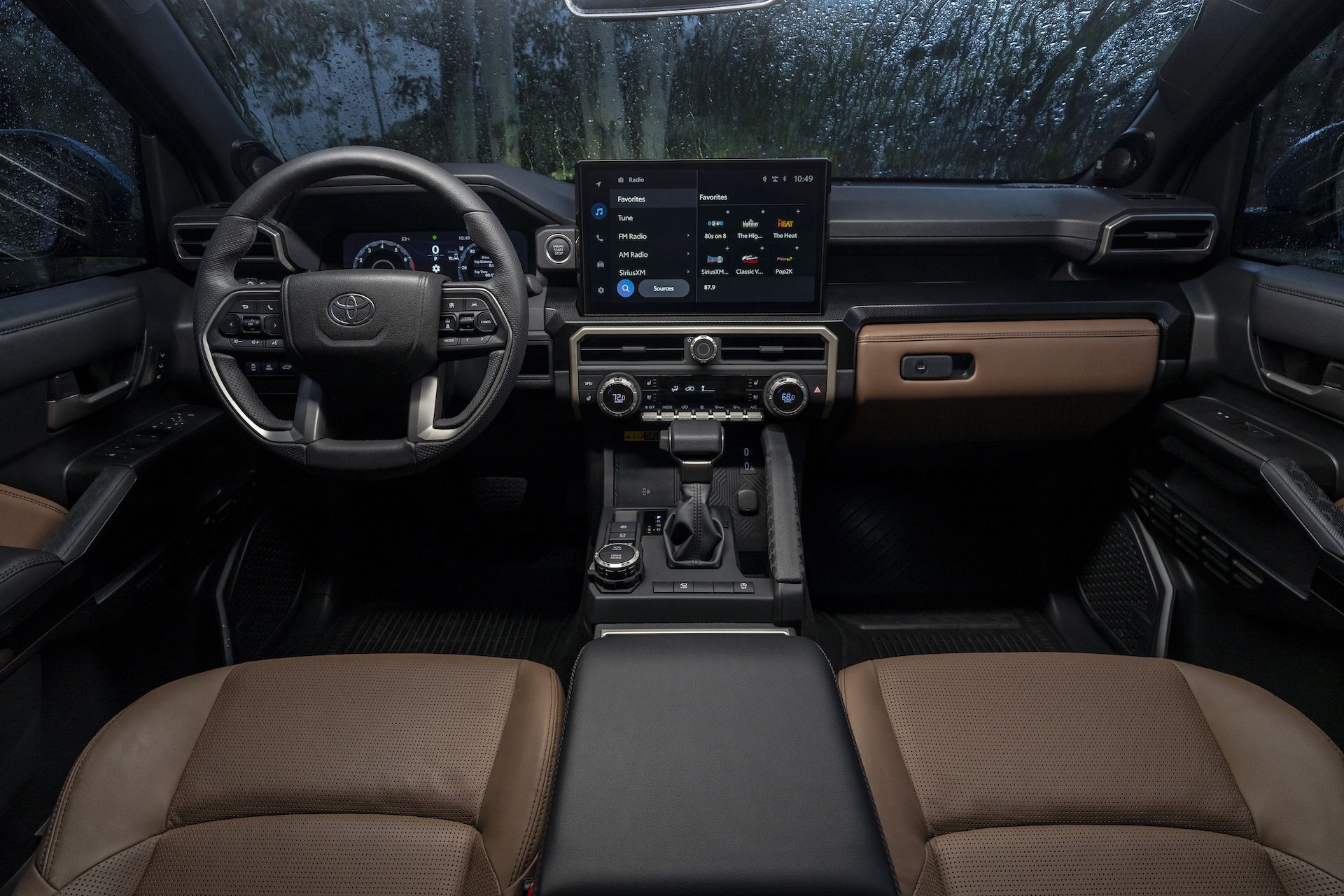Not everyone has the financial means to constantly buy new cars, and many people make the smart choice of sticking with their older vehicles.
In fact, the longest-lasting cars are highly sought after in the used vehicle market. When it comes to older automobiles, people tend to trust cars that have a proven ability to last for many years.
Do people still look for the longest-lasting cars these days? With so many new models being released every year, many people prefer to switch out their car every few years.
However, regular maintenance and timely replacement of parts can keep a car running almost indefinitely. The challenge, however, is that most of us either neglect regular maintenance or fail to recognize the warning signs that our cars need attention.
5 Vehicles That Get Better With Age
Only a select few car models can reach over 200,000 miles with minimal maintenance and without needing major overhauls. Here’s a list of some of the longest-lasting cars that may not always belong to the category of fancy or high-performance vehicles.
1. Toyota 4Runner
It’s no surprise that the Toyota 4Runner tops the list of longest-lasting cars. This SUV is one of the few models capable of hitting 300,000 miles, while most other vehicles struggle to even reach 200,000 miles.
While refinement may not be the 4Runner’s strongest point (though the latest models may change that), its durability and longevity are unmatched. Toyota has been manufacturing this rugged SUV since 1984, and it’s one of the few vehicles that can potentially outlast its owner.
The all-new Toyota 4Runner is a throwback to classic off-road design, yet it’s been updated with a complete overhaul, including a new platform, engine options, advanced tech, and refreshed styling—everything that 4Runner enthusiasts will be excited to hear about.
Was that a hint of sarcasm? Perhaps just a little. While we don’t expect this specific group of fans to get into a heated debate, we do believe it might take some time for the die-hard 4Runner aficionados to fully embrace these much-needed changes.
So, what exactly has changed? The 4Runner now sits on Toyota’s TNGA-F platform, which is shared with other body-on-frame vehicles like the current Land Cruiser, Lexus GX, and Tacoma pickup.
In fact, there’s a significant amount of Tacoma influence in this new 4Runner, from the powertrain and suspension to various other components, essentially making it the SUV counterpart of the Tacoma.
When it comes to engine options, the 4Runner comes equipped with a turbocharged 2.4-liter four-cylinder ‘i-Force’ engine, delivering 278 horsepower and 317 lb-ft of torque.
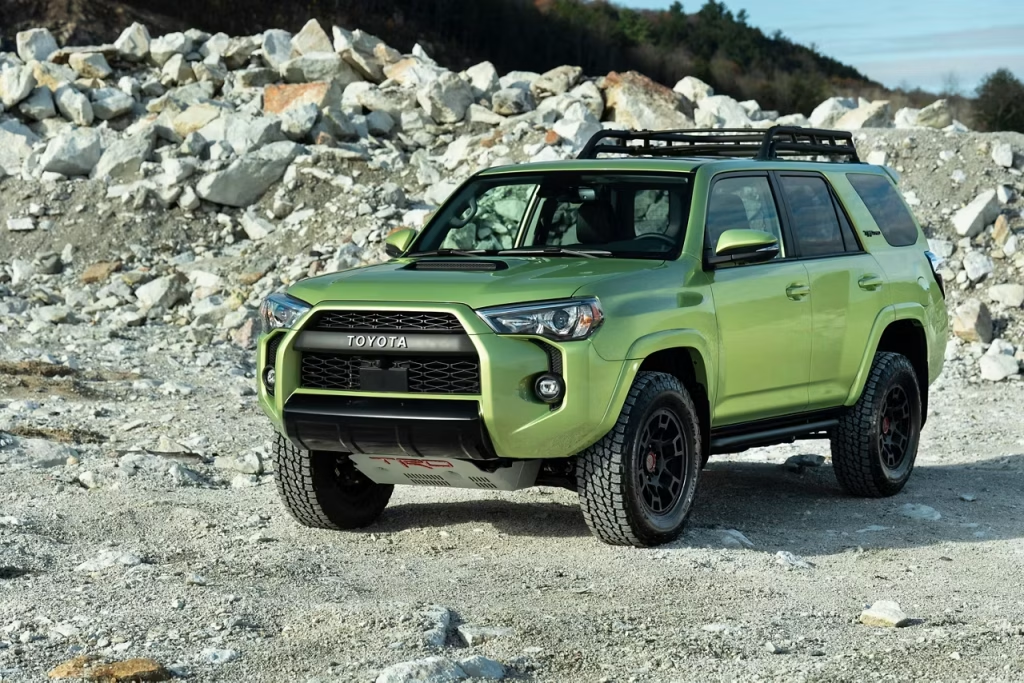
Depending on the configuration, power is sent to either the rear wheels or all four wheels via an eight-speed automatic transmission.
There’s also the i-Force Max, which is a hybrid version of the same engine, boosting output to 326 horsepower and 465 lb-ft of torque. All versions with this powertrain are four-wheel drive.
This hybrid option is aimed at providing the 4Runner with a fuel economy of 23 mpg, which is slightly better than the 21-22 mpg of the non-hybrid versions.
In real-world driving, hitting those numbers is challenging, but it still outperforms the outdated V6 engine of the previous model. Most of the nine available trim levels offer a choice between these two configurations, though some are limited to one or the other.
Wait, did you say nine trim levels? Yes, we did. We’ll dive deeper into these trims and configurations in just a moment, but for now, the big takeaway is that the legendary TRD Pro returns, joined by two new trims—Trailhunter and Premium.
The Trailhunter is designed as a ready-made overlanding option, offering unique suspension and exclusive styling features. The Premium trim is the new luxury flagship, equipped with all the premium features you could ask for, making it the ultimate road-ready option.
How does the 4Runner perform on the road? Whether equipped with the turbo or turbo hybrid engine, the 4Runner handles road driving decently—neither impressing with outstanding road manners nor disappointing, as long as you’re not in a rush for quick acceleration or braking.
Some trims with adaptive suspension offer a slightly smoother ride for everyday driving, but even the more off-road focused versions do well to avoid a jarring experience.
The 4Runner still retains a bit of that truck-like feel, thanks to its platform, though it doesn’t feel as rough as the Tacoma or as boxy as the Land Cruiser, which also shares this foundation.
How does the 4Runner perform off-road? The short answer is that it’s just fine. Testing the 4WD versions with both engine options confirmed that Toyota still knows how to produce a fully capable off-road vehicle.
The 4Runner features an independent front suspension and a multilink rear with coil springs and outboard-mounted shocks. Its ground clearance ranges from 8.1 to 10.1 inches (206-257mm), depending on the trim, with the highest ground clearance found in the TRD Pro and Trailhunter models.
The approach and departure angles range from 22 to 24 degrees, while the top-tier trims boast a remarkable 33-degree approach angle, a substantial improvement over the 19-degree approach angle of other off-road trims.
The 4Runner excels by performing competently off-road, albeit without much flair. While power was rarely an issue with either configuration, the 4Runner does show some struggle when tackling steep climbs. It manages to make it up, but it does so slowly and with some effort, with the transmission handling most of the load.
Also Read: 5 Used Cars That Dealers Are Paying Top Dollar For and 5 They Won’t Touch
2. Toyota Sequoia
It’s no shock that another Toyota is featured on this list, as the brand is renowned for its reliability and quality. Built on a sturdy pickup truck frame, the full-size Toyota Sequoia is powered by a robust V8 engine.
It offers a spacious interior, the Toyota Safety Sense system, and a variety of modern features. You can easily find used Sequoia models with over 200,000 miles on them, demonstrating their exceptional durability.
The 2025 Toyota Sequoia is a standout in the large SUV category, offering a blend of powerful performance and advanced technology.
Introduced as part of the third generation in 2023, this model brings a fresh design with impressive capabilities. The Sequoia seats up to eight passengers, making it a spacious choice for families or those needing to transport multiple people and gear.
It also boasts a hefty towing capacity of 9,250 pounds, making it a solid option for those who need to haul heavy loads. What sets this model apart is its standard hybrid powertrain, which combines performance with fuel efficiency.
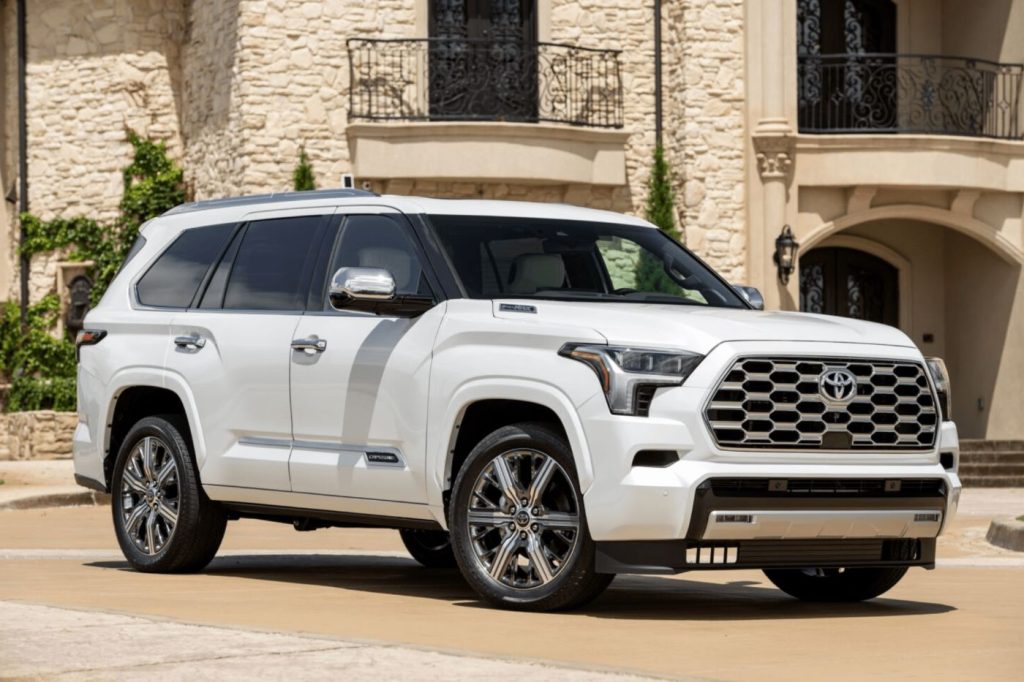
The Sequoia’s V6 hybrid engine generates 437 horsepower and achieves an EPA-estimated 20 mpg with rear-wheel drive or 22 mpg with four-wheel drive in combined driving. This performance is notably more efficient compared to most other large SUVs on the market.
New for 2025, the Sequoia introduces a Texas-inspired 1794 trim level, adding more luxury options for those seeking a premium experience. The Tow Tech package now includes a Wi-Fi trailer camera, enhancing towing convenience and safety.
Despite its strength and capability, the Sequoia has a few drawbacks, such as noticeable wind noise at highway speeds and a less-than-ideal third-row seating position.
Still, its strong powertrain, range of standard and available tech features, and comfortable ride for a truck-based SUV make it a solid contender in its class.
In terms of cost to drive, the 2025 Sequoia SR5 4dr SUV, with its turbocharged V6 hybrid engine, offers relatively low fuel costs compared to other large SUVs.
The average monthly cost for the Sequoia SR5 comes to around $175, which is more economical than the average $226 for other vehicles in this category.
This makes the Sequoia not only a powerful and capable SUV but also a practical option for those looking to balance performance with fuel efficiency.
3. Toyota Scion xB
The Toyota Scion xB may look like an oversized shoebox, but don’t let its appearance fool you. This vehicle is highly reliable, comfortable, and surprisingly spacious, offering generous cargo room.
Despite its unconventional look, it’s a great option if you can get your hands on one. The Scion xB is affordable, dependable, and built to last for many years.
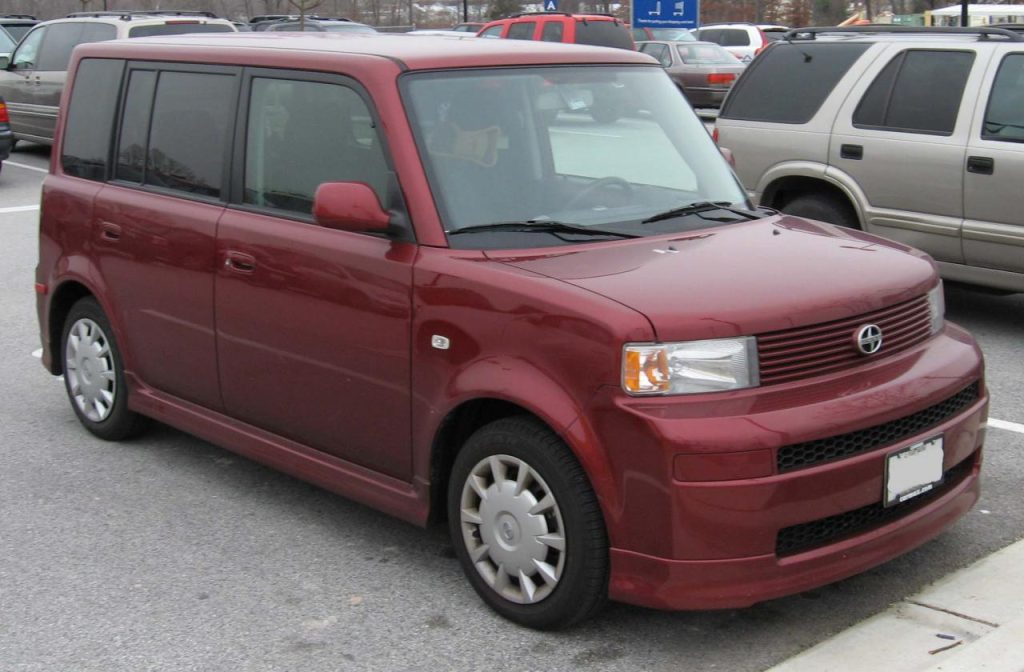
The 2025 vehicle is classified by the EPA as a small station wagon, and it comes with a front-wheel drive drivetrain. The engine is a 2.4-liter inline-4, requiring regular unleaded fuel.
It utilizes a sequential MPI fuel system for efficient fuel delivery. The engine produces a maximum horsepower of 158 at 6,000 RPM and a maximum torque of 162 lb-ft at 4,000 RPM.
Although the exact cooling system capacity is not specified, the vehicle features a manual transmission with overdrive and offers five transmission speeds.
4. Mazda6
The Mazda6 is a mid-size sedan that’s perfect for single-person use. The 2018 version of this car received some cosmetic updates that enhanced its overall appearance.
Its stylish design is paired with a well-crafted interior, excellent mileage, and impressive engine performance. This combination of factors makes the Mazda6 one of the longest-lasting cars in its class.
The Mazda 6 is a stylish, spacious, and sharp-driving sedan, but there’s an underlying issue—it’s essentially a “rep-mobile.”
In today’s market, large sedans and estates without German badges struggle to compete, having been overtaken by crossovers, more affordable SUVs, and the German brands that continue to dominate.
A clear example is Ford, which used to sell over 100,000 Mondeos in Britain, but the model is set to be completely phased out next year. It’s a sign of the times. So, does the Mazda 6 stand a chance as the next best option?
Mazda certainly hopes so, positioning the 6 against competitors like the Volkswagen Passat and Skoda Superb. Having been on sale since 2012 (which is quite impressive), the Mazda 6 has undergone several facelifts over the years to stay relevant, the most recent one being in 2018. The Japanese automaker believes there’s still plenty of life left in the model.
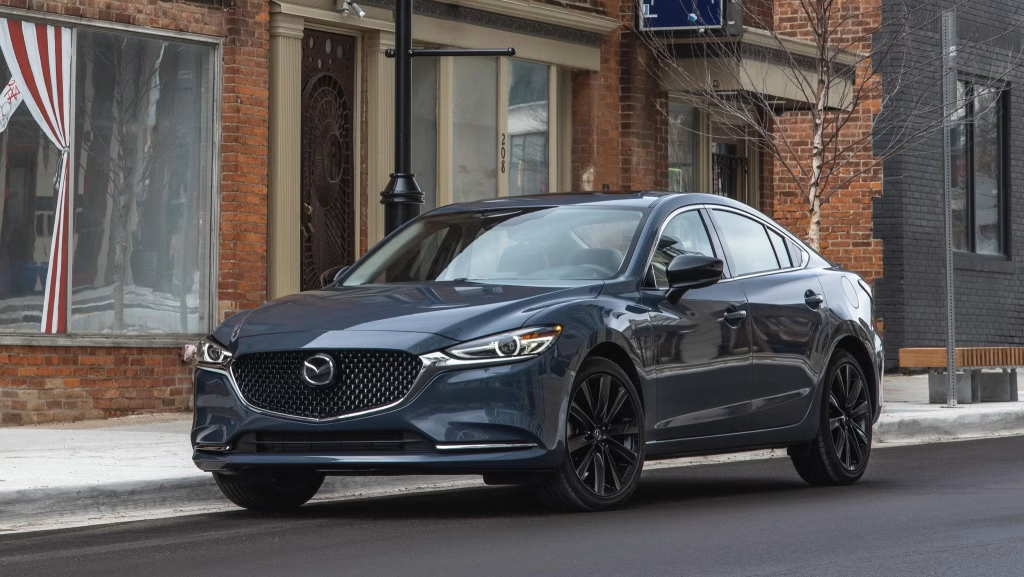
After quietly discontinuing the diesel engine in 2020, the 6 now offers three petrol engine options: a 2.0-liter with either 143bhp or 162bhp, and a more powerful 2.5-liter engine producing 191bhp. Mazda’s commitment to naturally aspirated engines, especially with the large 2.5-liter, is a bold decision, and their persistence is commendable.
However, the engines don’t quite live up to expectations. The 2.0-liter petrol engines, lacking turbochargers, feel underpowered for a car of this size, while the 2.5-liter engine, despite its higher power output, sounds rough and strained, failing to match the promise of its specs. For a detailed review, you can visit the Driving tab.
Also Read: 10 Cars With Best Dash Designs That Bring Innovation
5. Subaru Forester
Once considered a competitor to Toyota and Honda, Subaru may not have the same reputation it once did, but the Forester remains a solid choice for longevity.
This SUV is a versatile vehicle that can cater to various needs—from outdoor enthusiasts to everyday commuters. With its combination of durability and value for money, the Subaru Forester is certainly one of the longest-lasting cars available.
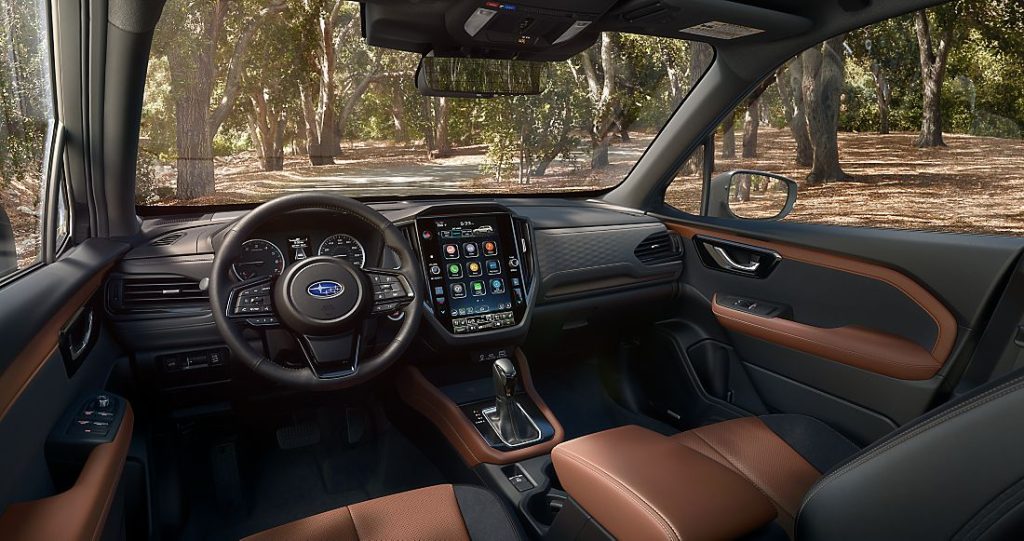
The 2025 Subaru Forester has undergone a significant redesign, marking the start of its sixth generation. While the exterior and cabin have been updated, with a more rugged look featuring sharper fender flares and a reshaped grille reminiscent of the Ford Explorer, the engine remains unchanged.
Additionally, the off-road-oriented Wilderness trim continues to be based on the previous-generation Forester. As a result, the new Forester feels more like an evolution of its predecessor rather than a complete overhaul.
Subaru’s Forester is a popular choice among its SUV offerings, alongside the smaller Crosstrek and larger Outback, and for 2025, the model introduces some subtle changes.
The overall size, both inside and out, remains largely the same. However, the Forester now features an upgraded touchscreen. All trim levels, except for the base model, come with a new 11.6-inch tablet-style touchscreen, which is the same display found in the larger Outback for the past few years.
A standout feature for the 2025 model is the introduction of the Subaru Forester Hybrid. This new hybrid powertrain delivers 194 horsepower, providing 14 more horsepower than the base engine.
It also offers an estimated 35 mpg in combined city and highway driving, which is a noticeable improvement over the regular Forester’s 29 mpg. However, while the hybrid variant offers a fuel efficiency boost, it still falls short compared to many other small hybrid SUVs on the market.
When it comes to driving costs, the 2025 Subaru Forester 4dr SUV AWD (2.5L 4cyl CVT) is relatively economical.
Based on an annual mileage of 15,000 miles (with a mix of 55% city and 45% highway driving) and energy costs of $3.13 per gallon for regular unleaded in North Dakota, the Forester Base is estimated to cost about $134 per month to drive. This is significantly lower than the $176 per month average cost for midsize SUVs.
The 2025 Forester continues to provide an array of advanced safety features as standard, which is part of its appeal, particularly for those seeking a spacious and off-road capable SUV.
However, it’s not without its drawbacks, including slow acceleration, an overly firm ride, and a cargo area that falls behind rivals in terms of space.
Cars That Don’t Do Well With Age
Your car’s longevity is influenced by various factors, but according to Progressive, most cars last for about 200,000 miles, with some reaching up to 300,000 miles.
However, there are also cars that may not even reach 100,000 miles, costing you both time and money in the process. If you’re looking for the best value, it’s essential to avoid cars that only last half as long as the average vehicle.
Dodge Dart
Transmission problems are common in Dodge Darts, along with other engine and electrical faults. These issues tend to occur early on, which reduces their overall lifespan compared to more reliable vehicles.
The Dart stands out with its unique styling, but beyond that, it doesn’t quite deliver. The standard setup includes a 160-hp 2.0-liter four-cylinder engine, paired with a six-speed manual transmission and front-wheel drive.
Optional engine choices include a 160-hp 1.4-liter turbocharged four-cylinder and a 184-hp 2.4-liter four-cylinder.
For those preferring an automatic transmission, six-speed automatics are available for both the 2.0- and 2.4-liter engines. The Dart offers an easy-to-use 8.4-inch touchscreen as an option, and there are several appearance packages available, allowing for a decent level of personalization.
Replacing the Caliber, the Dodge Dart marks a relatively recent endeavor for the automaker in the U.S. market.
It enters a highly competitive segment, going up against well-established rivals such as the Volkswagen Jetta and the Toyota Corolla. This means the Dart has to put in extra effort to compete effectively. Fortunately, it makes a commendable attempt.
With three available powertrain options—though only one of them genuinely leans toward sportiness—the Dart offers a spacious interior and respectable fuel economy, making it a suitable choice for buyers focused on practicality, especially those with small families.
However, despite its merits, the Dart doesn’t quite outshine its more popular competitors. This becomes more apparent considering that 2016 marks its final production year.
The Dart’s exterior styling resembles what you might imagine if someone asked a mother to design a family-friendly version of the Charger. That’s not to say it’s generic—far from it. Its most distinct feature is the rear, which showcases a full-frame LED taillight design, echoing more powerful Dodge models.
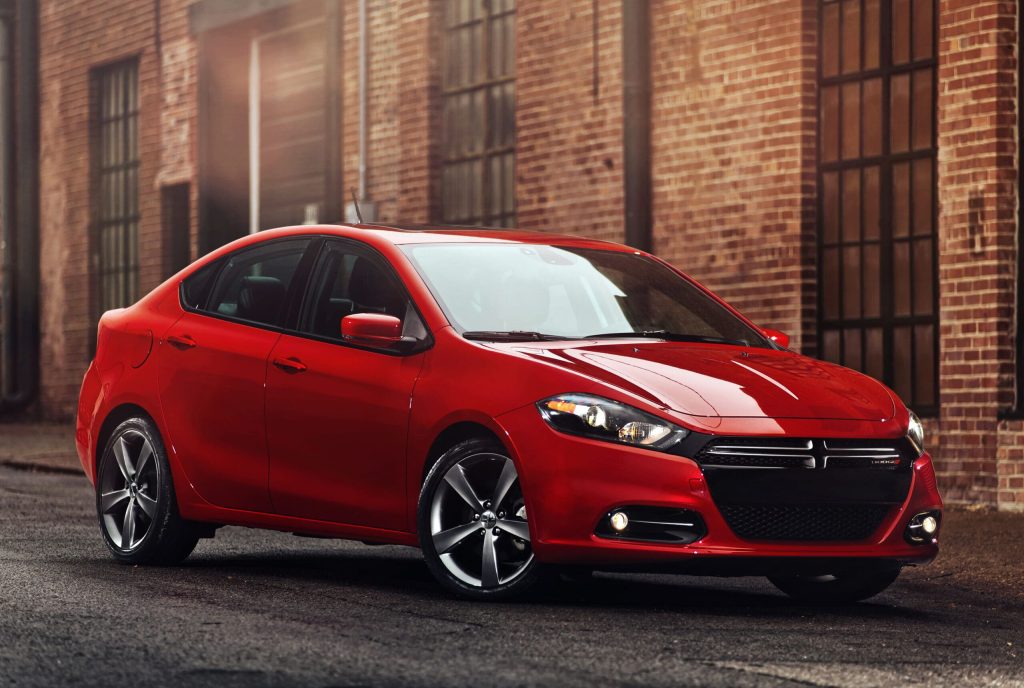
The twin chrome-accented exhaust tips add a sporty touch, protruding from the diffuser at the rear. Up front, the styling isn’t aggressive, but its proportions give it a more planted and wider stance than expected.
A broad selection of exterior colors is available, best appreciated through dealership brochures. In terms of size, the Dart measures 183.9 inches in length with a 106.4-inch wheelbase, a width of 72 inches, and a curb weight ranging between 3,186 and 3,215 pounds.
Under the hood, the Dart offers three engine options, but you’ll have to choose between power and fuel economy since both aren’t offered in a single package.
The base engine is a 2.0-liter four-cylinder that generates 160 horsepower and 148 lb-ft of torque. It’s the least responsive option and needs to be pushed hard to reach its potential.
The 1.4-liter turbocharged engine maintains the same horsepower but offers improved torque and better efficiency, with more performance becoming accessible above 3,000 rpm. The top-tier engine is a 2.4-liter unit delivering 184 horsepower. It’s more refined, smoother to drive, and easier to handle.
Each engine can be paired with a six-speed manual or a six-speed automatic transmission, and the 1.4-liter turbo can also be configured with a dual-clutch transmission. In terms of handling, the Dart’s dynamics help compensate for the more sluggish base engines.
The steering is well-weighted and responsive, delivering confident feedback that encourages spirited driving. It maintains impressive composure in corners, making it enjoyable to drive when you’re in the mood for a little fun.
Of course, your driving experience will depend heavily on your engine choice. The 2.0-liter gets the job done, but the 2.4-liter is much more engaging.
The 1.4-liter turbo offers a balanced middle ground, capable of accelerating from 0 to 60 mph in about eight seconds. Regardless of the engine, all models are electronically limited to a top speed of 120 mph.
Fuel economy ratings vary depending on the engine and transmission combination. The base 2.0-liter engine with a manual transmission achieves EPA estimates of 22 mpg city, 34 mpg highway, and 27 mpg combined.
When paired with the automatic, it returns slightly better city mileage at 24 mpg but the same combined figure. The 2.4-liter engine also achieves a combined 27 mpg in both transmission variants.
The most efficient choice is the 1.4-liter turbocharged engine, which delivers 27 mpg city, 38 mpg highway, and 31 mpg combined with the automatic. With the manual transmission, those figures drop slightly to 27/36/30 mpg.
Chevrolet Cruze
One owner reported having to replace the automatic transmission three times within just 70,000 miles. The site specifically recommends avoiding models from the years 2011, 2012, 2014, 2015, 2016, and 2018.
The Chevrolet Cruze, a compact car, made its debut for the 2011 model year as a successor to the 2004-2010 Cobalt. Designed as a global model, the Cruze was introduced in other countries before it was available in the U.S.
Unlike the Cobalt, which was offered in both coupe and sedan variants, the Cruze initially launched exclusively as a sedan.
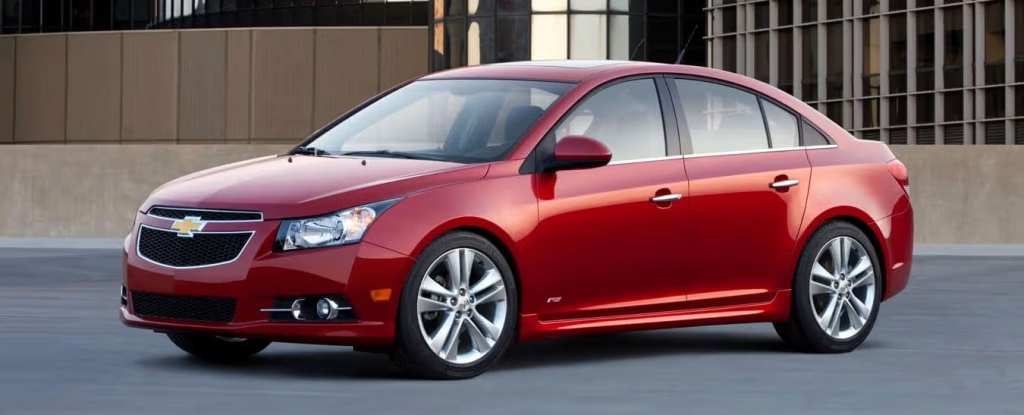
From 2012 to 2017, Buick sold an upscale version of the first-generation Cruze, known as the Verano. In 2016, the Cruze was redesigned with more stylish, swooping lines and a slightly larger platform.
A four-door hatchback version was introduced for the 2017 model year. The Cruze was discontinued in the U.S. after the 2019 model year, as American consumers increasingly preferred subcompact and compact SUVs over traditional compact cars.
Mini Cooper
While the Mini Cooper is loved for its unique design and handling, it’s known for its high maintenance costs. These combined problems contribute to a shorter lifespan for the Mini Cooper. It is advised avoiding models made between 2001 and 2012.
Driving an eco-friendly car doesn’t always mean sacrificing enjoyment, and the 2012 Mini Cooper proves that.
It combines an engaging driving experience with plenty of charm, while offering fuel economy similar to that of a typical economy car. It’s no surprise, then, that the modern Mini Cooper has remained a popular choice since its debut nearly a decade ago.
The good news is that you don’t need to choose the sportiest trim to enjoy lively performance. Thanks to the Cooper’s lightweight design, even the base model’s 121-horsepower inline-4 engine provides enough power to satisfy most drivers.
For those looking for a more spirited acceleration, the turbocharged Cooper S offers a boost without a significant drop in fuel efficiency. If you’re after the ultimate in Mini performance, the John Cooper Works edition delivers 208 horsepower, maintaining impressive fuel economy for its power output.
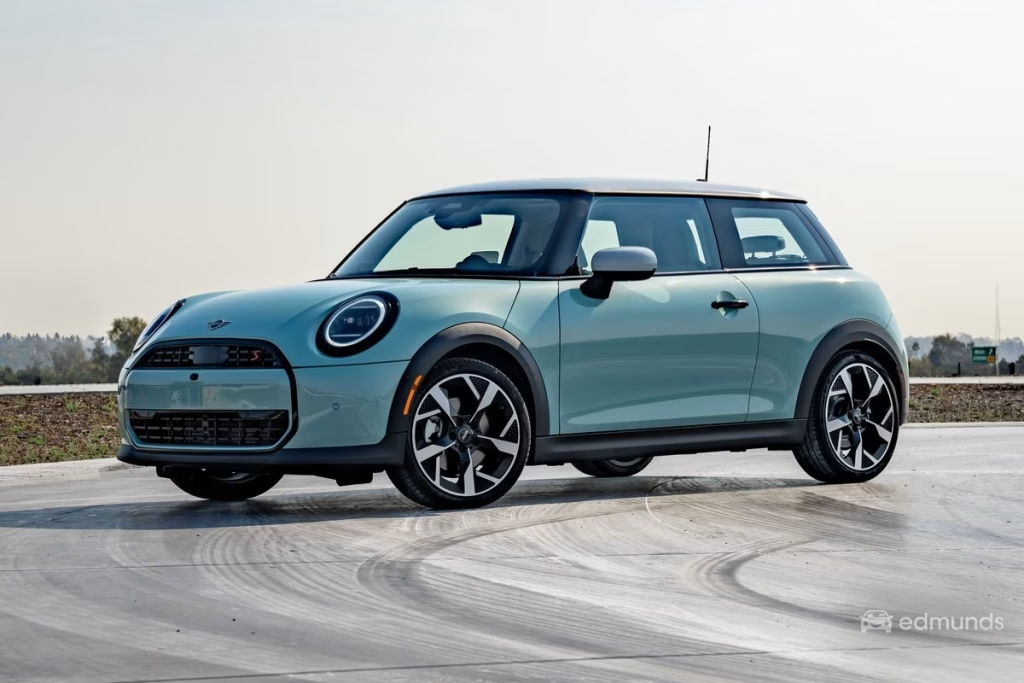
The Mini Cooper’s compact size also makes it incredibly maneuverable on tight, winding roads and easy to park in crowded city streets. It can fit into spots that many other cars would have to pass up.
Despite its small size, the Cooper offers surprising interior space for two people. Plus, with plenty of factory customization options and dealer-installed accessories, you can personalize your Mini to make it truly your own.
However, while the Mini Cooper’s fun nature is undeniable, it isn’t without a few drawbacks. Its nimble handling comes at the cost of a firm ride, which some may find a bit too stiff for comfort.
The rear seat is also cramped, with barely enough legroom for children, making it impractical for adult passengers. If you need more space, you might want to consider the longer-wheelbase Cooper Clubman or the four-door Countryman, which offer more practical seating capacity.
If you find that the comfort compromises outweigh the fun factor, you could look at alternatives like the similarly small Fiat 500, although it doesn’t quite match the Cooper’s lively performance.
Another option is the new Hyundai Veloster, which is roomier and more affordable than the Mini. For a convertible, you could also check out the Fiat 500 convertible, BMW’s refined 1 Series, or Volkswagen’s comfortable Eos.
But overall, none of these alternatives offer the same combination of personality, performance, and efficiency as the Mini Cooper. If those qualities matter to you, the 2012 Mini Cooper is tough to beat.
The 2012 Mini Cooper is equipped with a 1.6-liter four-cylinder engine that produces 121 horsepower and 114 pound-feet of torque. A six-speed manual transmission with hill-start assist is standard, while a six-speed automatic is optional.
Fiat 500
“The Fiat 500 is often considered stylish, but it’s plagued by reliability problems, particularly with its transmissions and electrical systems,” Singh noted.
“With parts wearing out quickly, frequent and costly repairs may discourage owners from driving the car beyond 100,000 miles.”
The Fiat 500’s retro styling—reminiscent of the original model from the late 1950s and 1960s—gives it a certain enduring charm.
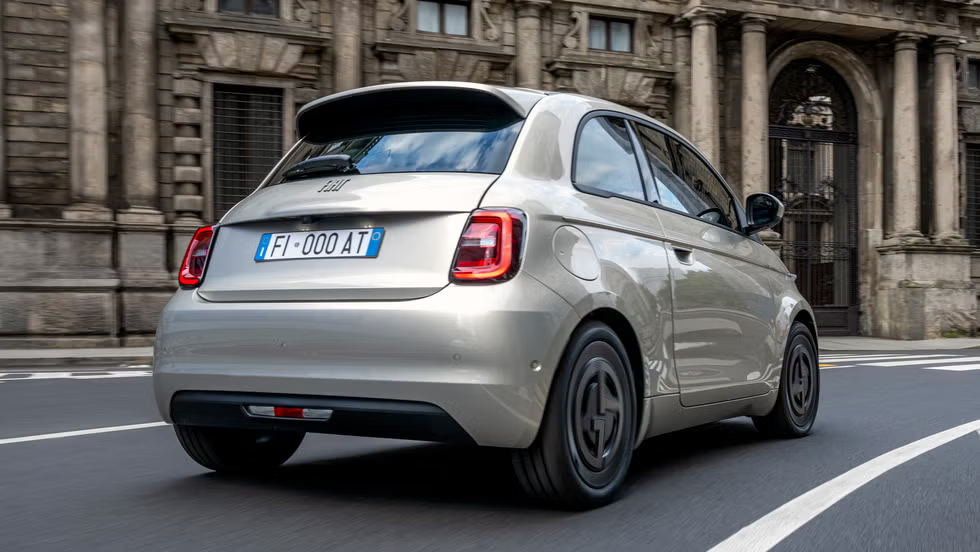
Additionally, the various updates it has undergone over the years have been quite notable. A significant refresh occurred in 2016, which introduced a sharper front end and a revamped infotainment system, among other enhancements.
In 2020, the engine lineup was simplified to a single version: the mild hybrid model known as the Fiat 500 Hybrid.
This variant is powered by a 1.0-litre petrol engine producing 69bhp, supported by a small electric motor and battery.
It’s not a plug-in hybrid, and it doesn’t offer pure electric driving. It performs well enough in city traffic but struggles to impress on the motorway.
Nissan Altima
The quality of the Nissan Altima has notably declined after 2002, according to CarLogos.org. Common issues with newer models include blown head gaskets and faulty automatic transmissions.
“It’s especially disappointing because Nissan Altimas were once great,” the site says. “The decline in quality seems to be a result of corporate greed and laziness, as Nissan knows how to produce quality vehicles but chooses not to in newer models.”
The Nissan Altima has been a prominent name in the midsize sedan market, competing with rivals like the Toyota Camry and Honda Accord since 1993. For 2025, the Altima remains a solid choice, though it may not be the best in its class.
With a straightforward design, impressive fuel economy, and good value, it still appeals to many buyers. However, competitors in this segment offer similar strengths while providing a more comfortable ride, better performance, or a larger cabin.
The 2025 model comes with a few changes, including the introduction of a new SV Special Edition package and the discontinuation of the turbocharged engine option.
The Altima now offers only the base 188-hp engine, which, while sufficient for daily driving, might not be as exciting as the previous turbocharged version.
Many shoppers may find this acceptable, as the base engine is still strong enough for routine use and offers decent fuel economy on the highway. However, the lack of a hybrid powertrain option is a notable shortcoming.
Other sedans with hybrid powertrains provide similar performance but deliver significantly better fuel efficiency, especially in city driving.
Despite these limitations, the Altima is still a practical and dependable option for those seeking an easy-to-drive midsize sedan.

The Altima’s pros include its easy-to-drive nature and good fuel economy, while its cons involve poor outward visibility due to a low-resolution backup camera and thick roof pillars, steering that lacks road feel and can be slow to respond, disappointing interior quality, and the absence of a hybrid option. The vehicle remains part of the sixth-generation Altima, which was introduced in 2019.
Monthly cost estimates for the 2025 Altima 2.5 S, based on driving 15,000 miles per year, come to $121, while the average midsize car would cost around $160 per month.
For those looking for a midsize sedan that balances performance with fuel efficiency and value, the 2025 Altima is still a competitive option, though its rivals may offer a bit more in certain areas.

